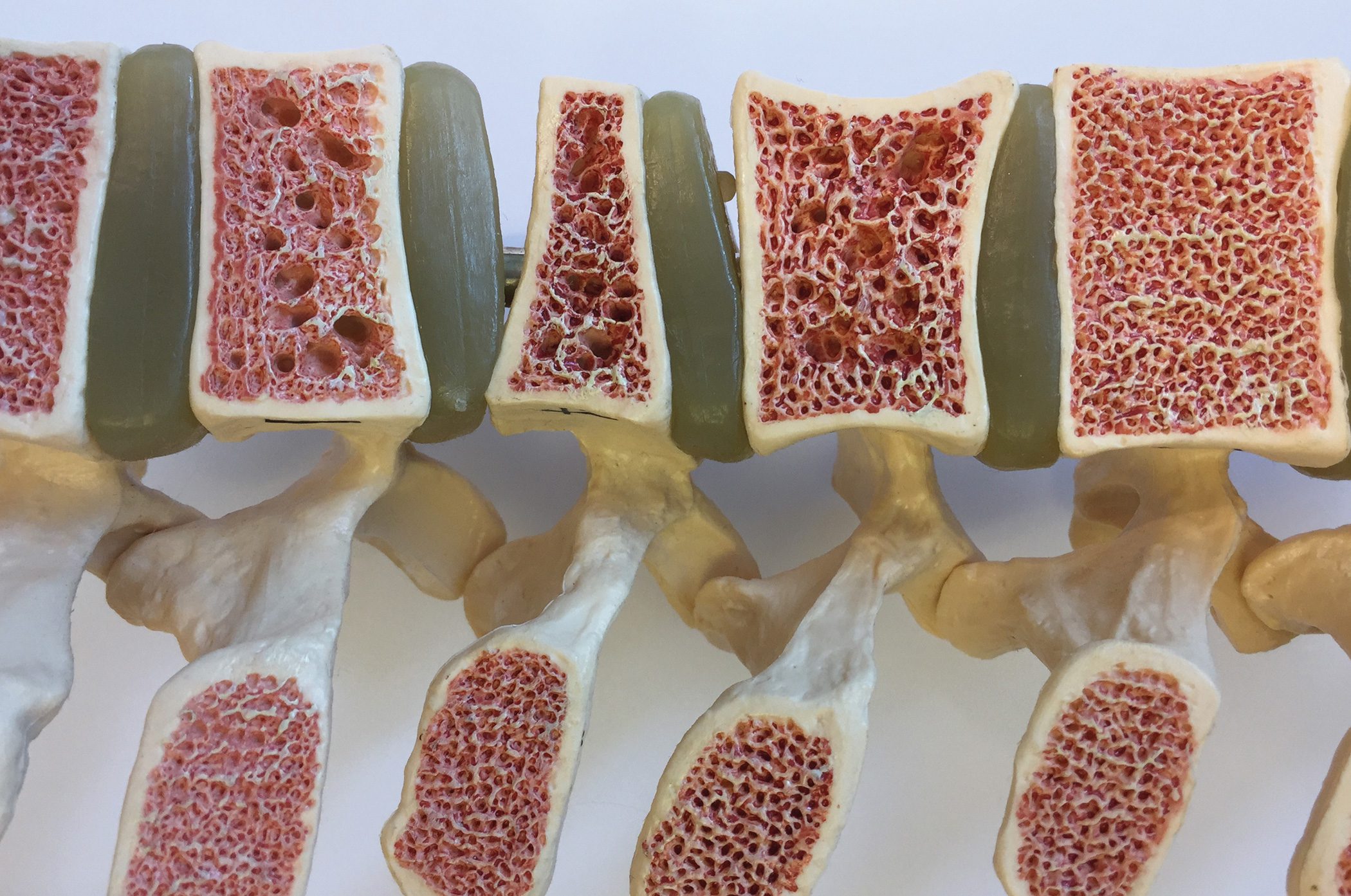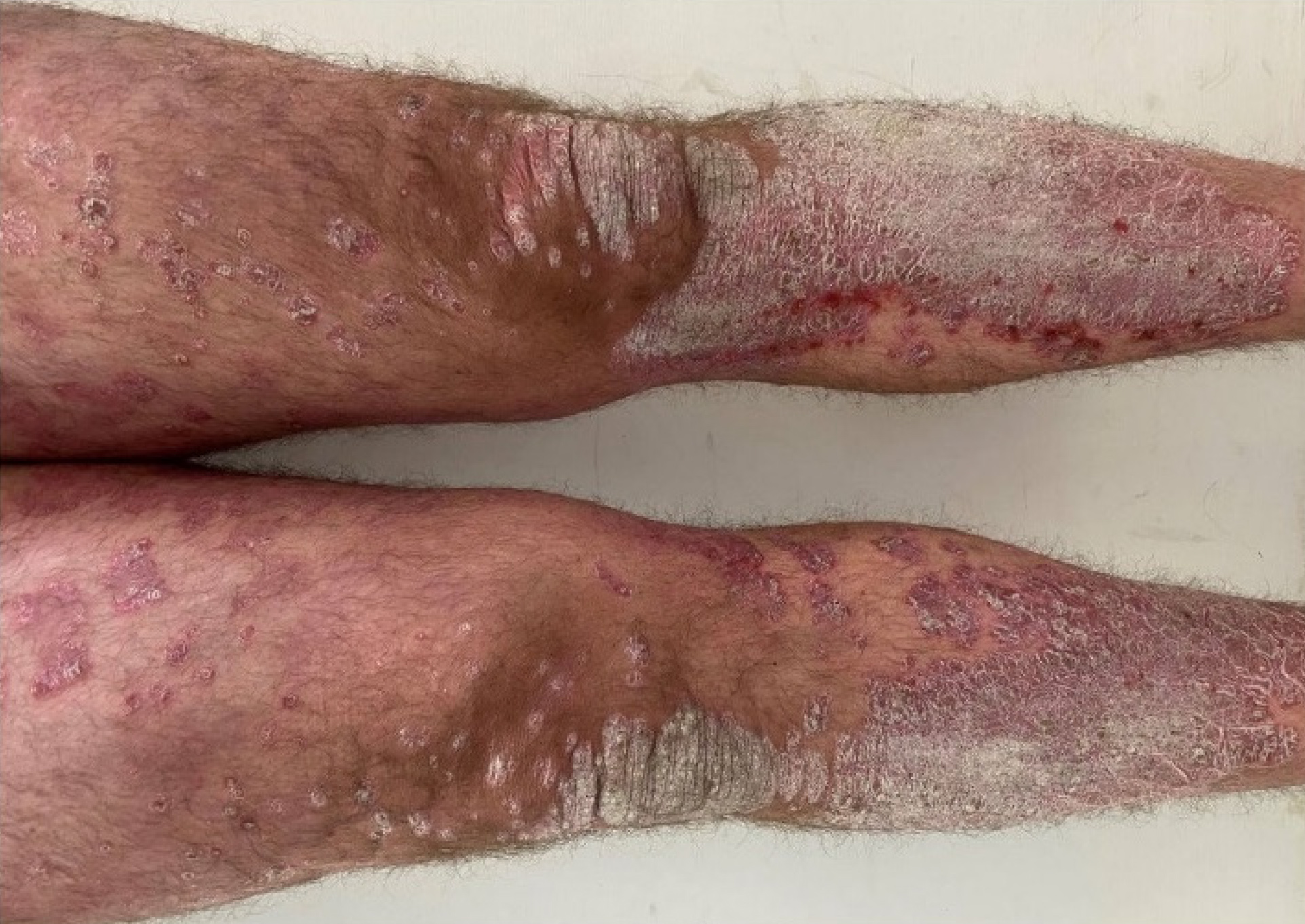This rare autoinflammatory syndrome, caused by a genetic mutation, was first described in 1962 by the English doctors Thomas James Muckle and Michael Vernon Wells. Muckle-Wells syndrome is one of the cryopyrin-associated periodic syndromes characterized by recurrent fever attacks and inflammatory symptoms. Patients are usually affected in childhood.
In addition to Muckle-Wells syndrome (MWS), cryopyrin-associated periodic syndromes also include familial cold-induced autoinflammatory syndrome (FCAS) and chronic infantile neurological-cutaneous-articular syndrome (CINCA) (Table 1). The autoinflammatory fever syndromes summarized under the acronym “CAPS” are caused by more than 60 different mutations, mainly in the NLRP3 gene on chromosome 1 (gene locus 1q44). This gene codes for the protein cryopyrin, which is the key component of the NLRP3 inflammasome. The genetic defect leads to an overproduction of interleukin-1β (IL-1β) and IL-18 and thus to a systemic inflammatory reaction [2]. In contrast to autoimmunity, autoinflammation involves excessive activation of the innate immune system without autoantibody formation or antigen-specific T cells [1]. All autoinflammatory fever syndromes are associated with a long-term risk of developing amyloid A amyloidosis. In CAPS patients, IL-1β production is five times higher than in healthy people [9]. This leads to an increase in inflammatory markers such as CRP (C-reactive protein) and SAA (serum amyloid) [9]. Inhibition of IL-1β interrupts the positive feedback mechanism and leads to a normalization of IL-1β production.
Chronic inflammatory activity as a characteristic feature
In comparison to FCAS, where relapses last 12-48 h, relapses of up to 3 days are common in MWS and are accompanied by headache, joint and muscle pain (Table 2) [1]. Typical triggers are usually not recognizable, although cold, stress and/or fatigue can act as triggers. In around 25% of patients, systemic AA amyloidosis develops as a result of the chronic inflammation, which can lead to kidney failure as the disease progresses. Furthermore, a sensorineural hearing impairment is often found. In MWS, sensorineural hearing loss can progress to complete deafness [2].
CINCA patients can also experience considerable pain due to continuous inflammatory activity in the brain, joints and muscles and, if left untreated, aseptic meningitis, cerebral atrophy, seizures, inner ear deafness, deforming arthritis and premature closure of the growth plates are possible consequences [1].
IL-1 inhibition proved to be effective
While in mild cases of FCAS the symptoms can usually be controlled by avoiding exposure to cold, in severe forms of MWS or CINCA, targeted therapy with an intervention in the proinflammatory effect of IL-1β is recommended [1,3]. Treatment with the IL-1 receptor antagonists anakinra and canakinumab was able to achieve complete control of symptoms in CAPS patients. IL-1β is predominantly secreted by monocytes/macrophages and is a mediator of local and systemic inflammatory reactions with production of proinflammatory cytokines [4]. In Switzerland, the IL-1β blocker canakinumab (Ilaris®) is approved for the treatment of CAPS in children aged 2 years and older [8]. The antibody develops anti-inflammatory properties by binding to interleukin-1β and blocking the pro-inflammatory cytokine [5]. Canakinumab is usually administered every eight weeks as a single dose by subcutaneous injection. Non-steroidal anti-inflammatory drugs (NSAIDs) and glucocorticoids can be used in the short term during flare-ups. These anti-inflammatory drugs alleviate the symptoms but do not intervene in the underlying pathogenesis [9].
In MWS, the long-term prognosis is mainly negatively affected by amyloidosis and impaired renal function, and hearing loss is also a significant long-term complication [6]. In CINCA, the long-term prognosis depends on the severity of nervous system, sensory and joint involvement [6]. Hypertrophic arthropathies can lead to severe disabilities. Children with CINCA can suffer from growth disorders during the course of the disease. The long-term prognosis of FCAS is generally good, but quality of life can be affected by recurrent episodes of fever [6].
Case study: MWS diagnosis in a 25-year-old man
A case study was published in Reumatología Clínica, a leading peer-reviewed journal for rheumatology in the Spanish-speaking world, in which symptoms initially attributed to Still’s disease turned out to be MWS as a result of genetic testing [10]. The patient had recurrent episodes of persistent fever since the age of two, occurring once or twice a year. Hepatosplenomegaly was detected during a pediatric examination. He also had joint and muscle pain without signs of inflammation; in addition, he had a history of several episodes of abdominal pain and skin rashes. The family history of recurrent fevers or connective tissue diseases was negative. The patient was examined in the departments of pediatrics, rheumatology, hematology and internal medicine, and was initially diagnosed with systemic Still’s disease. NSAIDs and paracetamol were used for treatment. Laboratory tests revealed persistent leukocytosis and an increase in acute phase proteins, CRP and erythrocyte sedimentation rate. However, the values of ferritin, rheumatoid factor, antinuclear antibodies (ANA), the complement system and immunoglobulins were always negative or within the normal range.
When the patient was 23 years old, proteinuria in the nephrotic range was detected without any change in the sediment. As it was suspected that the proteinuria could be related to the intake of NSAIDs or the underlying inflammatory process, a kidney biopsy was requested, in which secondary amyloidosis was detected. In view of the clinical findings and analysis results described and the development of renal amyloidosis, it was decided to reconsider the diagnosis of M. Still was reconsidered. In this context, the suspected diagnosis of a hereditary systemic autoinflammatory disease was clarified. As the result of a genetic test was positive for a mutation of the NLRP3 gene and due to the clinical manifestations described, the diagnosis was no longer Still’s disease but Muckle-Wells syndrome.
Take-Home-Messages
- An autoinflammatory syndrome should be considered in the case of periodically recurring but non-progressive fever accompanied by an increase in inflammatory parameters.
- The diagnosis of CAPS is made on the basis of clinical symptoms before it is genetically confirmed. Distinguishing between FCAS, MWS and CINCA/NOMID can be extremely difficult due to the overlapping symptoms. It is based on the patient’s clinical symptoms and medical history.
- According to recent findings, interleukin (IL)-1 is overproduced in CAPS and plays a major role in the etiopathogenesis.
- In MWS, the anti-IL-1 antibody canakinumab has proven to be very effective in containing inflammatory processes
Literature:
- Pankow A, et al: What is certain in the treatment of autoinflammatory fevers? [What is confirmed in the treatment of autoinflammatory fever diseases?]. Internist (Berl) 2021; 62(12): 1280-1289.
- Flexikon, https://flexikon.doccheck.com/de/Cryopyrin-assoziiertes_periodisches_Syndrom, (last accessed 11.06.2024).
- Malcova H, et al: IL-1 inhibitors in the treatment of monogenic periodic fever syndromes: from the past to the future perspectives. Front Immunol 2020; 11: 619257. doi: 10.3389/fimmu.2020.619257.
- Mittermeir R, et al: Autoinflammatory syndromes with periodic fever. Swiss Med Forum 2021; 21(2930): 509-513.
- Pharmawiki: Canakinumab, www.pharmawiki.ch/wiki/index.php?wiki=Canakinumab, (last accessed 11.06.2024).
- University Hospital Tübingen: Autoinflammation Reference Center, www.medizin.uni-tuebingen.de/files/view/a4oE07pjbJvE1bZDVrGyQ5L6/CAPS.pdf, (last accessed 11.06.2024).
- “Recommendations for therapy with interleukin-1β blocking agents”, https://dgrh.de/Start/Publikationen/Empfehlungen/Medikation/Anakinra.html, (last accessed 11.06.2024)
- Swissmedic: Arzneimittelinformation,
www.swissmedicinfo.ch, (last accessed 11.06.2024) - Kuemmerle-Deschner JB, Haug I: Canakinumab in patients with cryopyrin-associated periodic syndrome: an update for clinicians. Ther Adv Musculoskelet Dis 2013; 5(6): 315-329.
- Solís Marquínez MN, García Fernández E, Morís de la Tassa J: Periodic fever: From Still’s disease to Muckle-Wells syndrome. Reumatol Clin (Engl Ed). 2019 Sep-Oct;15(5): e39-e40.
FAMILY PHYSICIAN PRACTICE 2024; 19(6): 36-37














